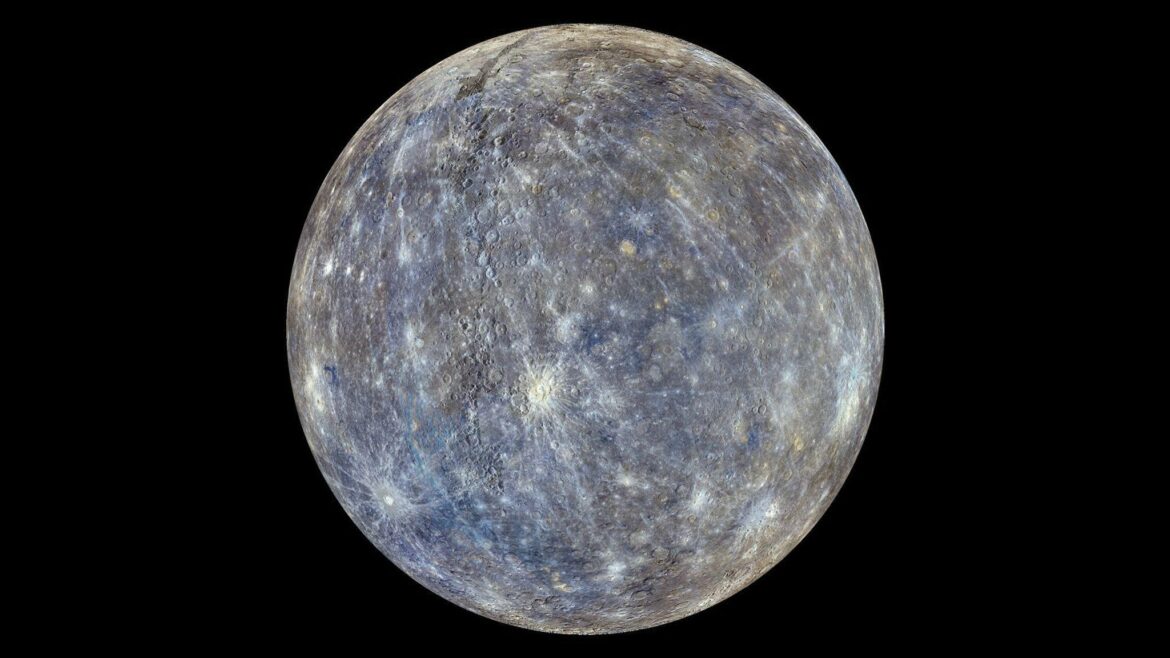The question of what Mercury is made of is still not completely clear. Because of the planet’s close proximity to the Sun, precise measurements and observations are very difficult. This makes Mercury the least explored planet to date.
What is Mercury made of? Composition and structure
From the Sun’s point of view, Mercury is the first planet in our solar system. However, this is exactly what makes the exploration of the planet so difficult. Because while its direct proximity to the sun causes interference, it also makes it difficult for space probes to get close.
- Like Venus, Earth and Mars, Mercury is a rocky planet. It consists mainly of solid mineral substances and has a high density.
- Mercury is currently thought to have a core of iron and nickel that is solid on the inside and liquid on the outside. The diameter of this core is thought to be the largest part of the planet, around 4100 kilometres.
- On top of this could be a thin layer of solid iron sulphide. This is followed by the planet’s mantle, which consists mainly of silicate rock.
- The crust above is probably composed of feldspar and pyroxene minerals and is relatively thick, with a probable thickness of 30 to 40 kilometres. The high number of craters on the surface suggests that it is around 4 to 4.5 billion years old.
- Just like our moon, Mercury has no real atmosphere. Instead, it has a very thin exosphere. This contains hydrogen and helium from the solar winds, as well as oxygen, sodium and potassium. The latter probably come from the rocks on the planet’s surface.
Facts and figures about Mercury
Centuries before the birth of Christ, the existence of Mercury was known to man. It was first observed through a telescope in the 17th century. Since the planet closest to the sun is also the fastest in our solar system, the ancient Romans named it after the messenger of the gods from Roman mythology: the winged Mercurius is the godfather of Mercury’s name.
-
- Mercury is the smallest planet in our solar system with a diameter of 4,880 kilometres. By comparison, the Earth has a diameter of around 12,700 kilometres.
-
- The distance to the sun is on average 58 million kilometres. It is an average of 77 million kilometres from Earth. Since both planets move at different speeds and in different orbits around the Sun, this distance varies between about 77 and 222 million kilometres.
-
- Mercury revolves relatively slowly and takes 58 Earth days and 15 hours to complete one rotation. Because it orbits the Sun at high speed at the same time, a Mercury day – the period between sunrise and sunset – lasts 176 days.
-
- By contrast, the planet needs only 88 Earth days to orbit the Sun. Curiously, a Mercury day thus lasts longer than a Mercury year.
-
- Because Mercury does not have a proper gas envelope, there are extreme temperature differences on its surface. For example, temperatures on the sunny side can reach 427°C, while on the night side it is only -173°C.
-
- Mercury has neither rings nor moons. This is prevented by the planet’s extreme proximity to the Sun, its small dimensions and its low gravity.

